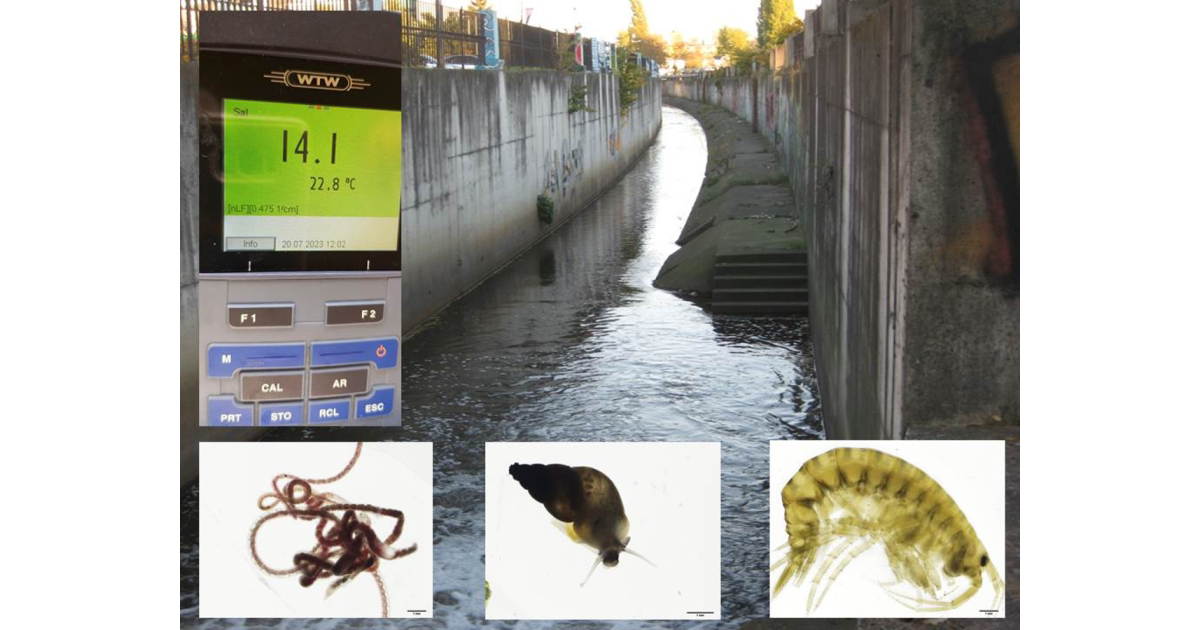Contemporary Threats to Biodiversity in Aquatic Ecosystems
A special issue of Water (ISSN 2073-4441). This special issue belongs to the section "Biodiversity and Functionality of Aquatic Ecosystems".
Deadline for manuscript submissions: closed (20 January 2025) | Viewed by 1629

Special Issue Editors
Interests: hydrobiology; freshwater ecology; Mollusca; anthropogenic salinisation; biological invasions; macroinvertebrates; biomonitoring; anthropogenic reservoirs; pollution
Special Issues, Collections and Topics in MDPI journals
Interests: macroinvertebrate communities; water mites; taxonomy; parasitology; biodiversity; limnology
Special Issues, Collections and Topics in MDPI journals
Special Issue Information
Dear Colleagues,
The Anthropocene has brought with it multiple new and serious threats that impact both freshwater and marine ecosystems. Among contemporary threats to aquatic ecosystems, climate change, habitat loss and barriers to migration routes, pollution, including eutrophication, freshwater salinisation, microplastic and pharmaceutical contamination or cumulative stressors, are most important. The pollution of aquatic ecosystems is a global problem, occurring in areas remote from the direct sources of anthropogenic processes. Plastic waste is damaging aquatic ecosystems around the world, while microplastics (a mixture of persistent organic pollutants, heavy metals, and adsorbed or absorbed pollutants from the aquatic environment) are entering the food chain and have been recorded even in the Mariana Trench, as well as the ice of the Arctic and Antarctic. The exploitation and processing of hard coal affect aquatic ecosystems (freshwater eutrophication, secondary freshwater salinisation, freshwater and marine ecotoxicity, and acidification) and contribute to global warming. It has been demonstrated that nutrient-rich groundwater is a bigger source of pollution in coral reef ecosystems than was previously thought, e.g., in the Great Barrier Reef. More than 75% of the world’s coral reefs will bleach every year by 2070 if global warming continues on its current path. Anthropogenic stressors can promote species invasions and favour invasive alien species (IAS) over native species, exacerbating their impacts on food webs. According to the Living Planet Report (2022), the evidence for the dual crises of biodiversity loss and global warming, triggered by the unsustainable use of our planet’s resources, is unequivocal. Freshwater populations have declined by an average of 83% since 1970; more than any other organisms. Anthropogenic stressors, including habitat loss and barriers to migration routes, account for around half the threats to these populations. Undoubtedly, decisive measures should be taken to limit the anthropogenic stressors within aquatic ecosystems, especially in the context of climate and environmental emergencies. For example, the European Union 2030 Biodiversity Strategy calls for greater efforts to restore freshwater ecosystems and the natural functions of rivers (making at least 25,000 km of rivers free-flowing again by 2030, by removing artificial barriers and restoring floodplains and wetlands).
To face with the contemporary threats to biodiversity in aquatic ecosystems, this Special Issue will serve as the platform for exchanging views and experiences by publishing research in the field of aquatic ecosystems. We welcome all fundamental and applied studies on the impact of anthropogenic factors on both freshwater and marine ecosystems, and scientific solutions to bend the curve of aquatic biodiversity loss. This knowledge can help decision-makers and stakeholders with the sustainable management of aquatic ecosystems, especially in the context of climate change.
Prof. Dr. Iga Lewin
Prof. Dr. Andrzej Zawal
Guest Editors
Manuscript Submission Information
Manuscripts should be submitted online at www.mdpi.com by registering and logging in to this website. Once you are registered, click here to go to the submission form. Manuscripts can be submitted until the deadline. All submissions that pass pre-check are peer-reviewed. Accepted papers will be published continuously in the journal (as soon as accepted) and will be listed together on the special issue website. Research articles, review articles as well as short communications are invited. For planned papers, a title and short abstract (about 100 words) can be sent to the Editorial Office for announcement on this website.
Submitted manuscripts should not have been published previously, nor be under consideration for publication elsewhere (except conference proceedings papers). All manuscripts are thoroughly refereed through a single-blind peer-review process. A guide for authors and other relevant information for submission of manuscripts is available on the Instructions for Authors page. Water is an international peer-reviewed open access semimonthly journal published by MDPI.
Please visit the Instructions for Authors page before submitting a manuscript. The Article Processing Charge (APC) for publication in this open access journal is 2600 CHF (Swiss Francs). Submitted papers should be well formatted and use good English. Authors may use MDPI's English editing service prior to publication or during author revisions.
Keywords
- anthropogenic factors
- aquatic ecosystems
- biodiversity
- water pollution
- habitat loss
- climate changes
Benefits of Publishing in a Special Issue
- Ease of navigation: Grouping papers by topic helps scholars navigate broad scope journals more efficiently.
- Greater discoverability: Special Issues support the reach and impact of scientific research. Articles in Special Issues are more discoverable and cited more frequently.
- Expansion of research network: Special Issues facilitate connections among authors, fostering scientific collaborations.
- External promotion: Articles in Special Issues are often promoted through the journal's social media, increasing their visibility.
- e-Book format: Special Issues with more than 10 articles can be published as dedicated e-books, ensuring wide and rapid dissemination.
Further information on MDPI's Special Issue policies can be found here.






